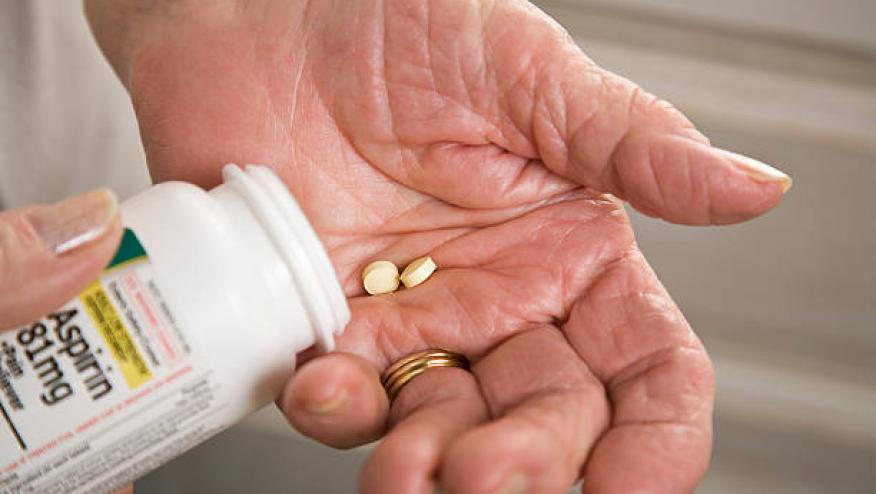Cutting Oral JAK 1/2 Inhibitor Dose an Option in RA Save

Many patients with rheumatoid arthritis (RA) who achieved sustained disease control with baricitinib (Olumiant) treatment were able to reduce their daily dose from 4 mg to 2 mg and maintain their response, a double-blind substudy of a long-term extension trial found.
Among patients who were randomized to the dose reduction from 4 mg to 2 mg/day, 67% maintained low disease activity and 33% maintained clinical remission for 48 weeks, according to Tsutomu Takeuchi, MD, PhD, of Keio University School of Medicine in Tokyo, and colleagues.
And for those who remained on the higher dose, 80% remained in low disease activity and 40% maintained remission, the researchers reported in Annals of the Rheumatic Diseases.
However, modest but significant worsening was seen on some disease outcomes with dose reduction, but most patients were able to regain control with a return to the higher dose.
The current goal of treatment in RA is sustained remission or at least low disease activity, and once this goal has been attained, the current recommendations of both the American College of Rheumatology and the European League Against Rheumatism suggest an attempt to reduce the doses of conventional disease-modifying antirheumatic drugs (DMARDs) and biologics.
"While overall burden of drug intake and societal or individual costs is thereby reduced, the important aspect in the course of tapering RA therapy is maintenance of sustained disease control," the investigators wrote.
Several recent studies have considered the effects of dose decreases or treatment withdrawal with biologics and DMARDs, and while some success has been reported, many patients have flared and not all were able to return to their former state of disease control with re-escalation of treatment.
Baricitinib is an oral JAK 1/2 inhibitor that has been approved in many countries based on four pivotal clinical trials (RA-BEGIN, RA-BEAM, RA-BUILD, and RA-BEACON). An ongoing long-term extension, RA-BEYOND, has included patients from all the phase III trials, and is expected to continue for a total of 10 years.
The current analysis focused on the step-down substudy of RA-BEYOND, and included 559 patients who had at least 48 weeks of follow-up after having sustained response for ≥15 months. The endpoints were the number of patients who maintained a score of ≤10 (low disease activity) on the Clinical Disease Activity Index (CDAI) after decreasing the dose to 2 mg versus those who continued on 4 mg, and time to relapse.
Other endpoints included the number of patients who remained in remission, defined as a CDAI score of ≤2.8, and changes in other composite measures of efficacy.
Participants' mean age was 54, and three-quarters were women. Mean disease duration was 9.4 years, and 82% were on background methotrexate.
Relapse rates during 48 weeks of follow-up were 37% among patients who decreased their dose compared with 23% for those who remained on the higher dose (P=0.001), and relapses occurred more quickly in the step-down group. Those who relapsed were allowed rescue medication with open-label baricitinib (4 mg) and/or increases in background conventional DMARDs. Rescue rates were 18% in the 2-mg group and 10% in the 4-mg group.
Two-thirds of patients who had required rescue therapy were able to regain their baseline CDAI status within 6 months, and most of the remainder did so at a subsequent time point.
Outcomes that showed small but significant differences in the 4-mg and 2-mg groups included the Simplified Disease Activity Index, the Disease Activity Score in 28 joints, swollen and tender joint counts, C-reactive protein, and Physician's Global Assessment. Differences were not seen on pain scores, erythrocyte sedimentation rates, or the Health Assessment Questionnaire-Disability Index.
With regard to safety, infections occurred more often in the 4-mg group (30.6% vs 24.9%) but serious adverse events and events leading to discontinuation were seen at similar rates in the two groups.
"Attempted dose taper after induction of sustained RA control appears a reasonable consideration with baricitinib," the authors stated.
A lower dose also may be preferable for safety reasons. "In this regard, although the data are limited, some safety trends appeared to favor the 2-mg dose, including overall adverse event and infection rates," they noted. Only the 2-mg dose has been approved in the U.S., and the drug's labeling carries a boxed warning about serious infections, malignancies, and thrombosis.
A study limitation was the lack of radiographic data for structural effects of step-down treatment.
The study was supported by Eli Lilly and Incyte. Some co-authors are Eli Lilly employees.










If you are a health practitioner, you may Login/Register to comment.
Due to the nature of these comment forums, only health practitioners are allowed to comment at this time.